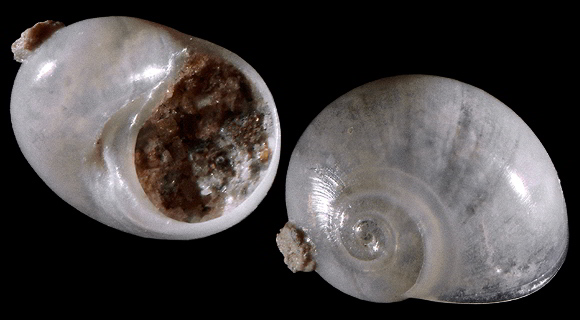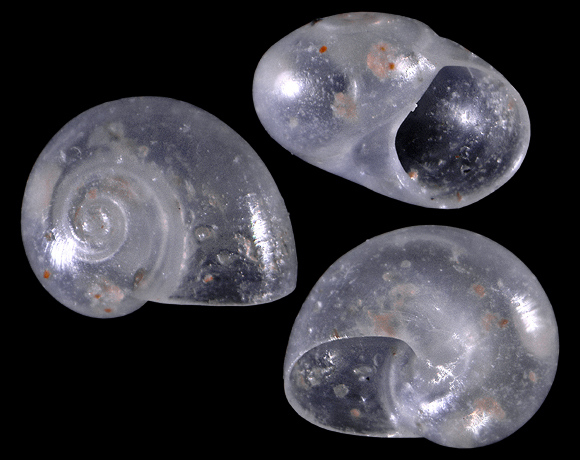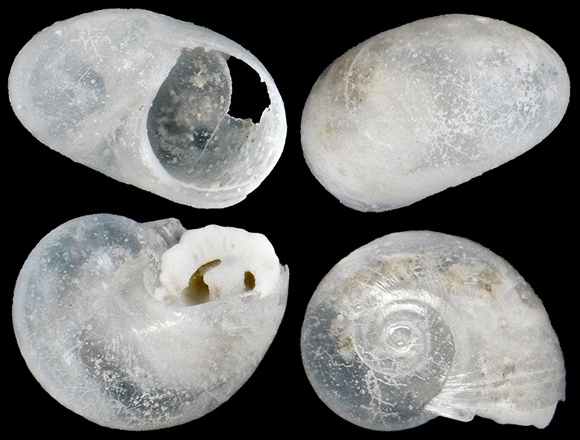
Original taxon: Oxystele depressa. Synonym: tinostomoides.
8-12m deep, in sediments on sandy bottom, Vignola bay, Marina di Davia, Corbara, NW. Corsica. 1,2mm.
Original pictures provided by S. Clanzig (FR).
– (CC BY-NC-SA) –
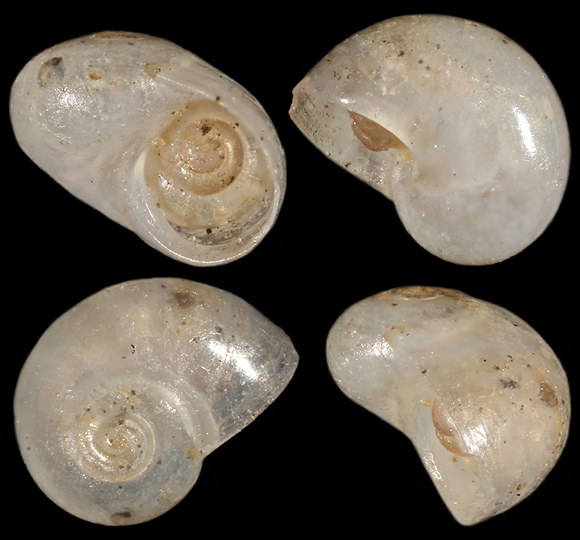
« The shell […] is very small, Natica-like, with an umbilical callus, transparent and rather solid. The larval shell […] is hyperstrophic […]. Protoconch I is only partly visible, and is mainly sculptured by a system of branching and anastomosing small ridges, except close to the demarcation to protoconch II. Protoconch II is almost smooth with only a few incremental lines and spirally arranged granulae, and consists of about 0.7 whorl. The teleoconch consists of about 2.0 whorls, usually almost perfectly smooth, separated by a very indistinct and shallow suture. Occasional specimens differ in having the initial part of the teleoconch equipped with a few spiral ridges […], but this character varies in strength. The aperture is prosocline, almost tangential with the inner lip spread out to form a solid parietal and umbilical callus. […] Operculum […] thin and transparent, multispiral with short growth zone and central nucleus. » – Warén, Gofas & Schander: “Systematic position of three European heterobranch gastropods”, The veliger vol. 36, Berkeley 1993, p.3.
Tharsiella tinostomoides Fekih & Gougerot, specimen MNHN-IM-2000-31687 in the collection of the Muséum national d’Histoire naturelle, Paris, France. Original pictures provided by M. Caballer for the MNHN – (CC BY).
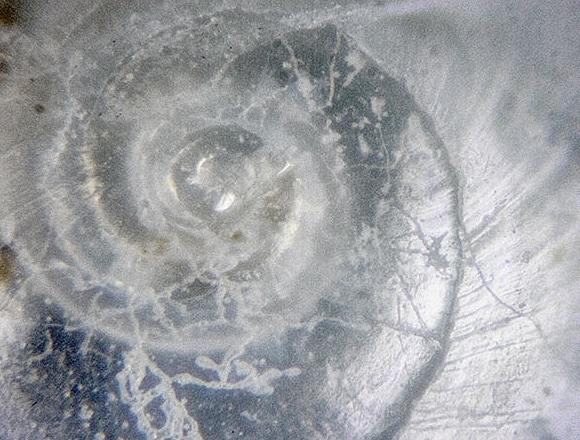
Original picture provided by S. Clanzig (FR).
– (CC BY-NC-SA) –
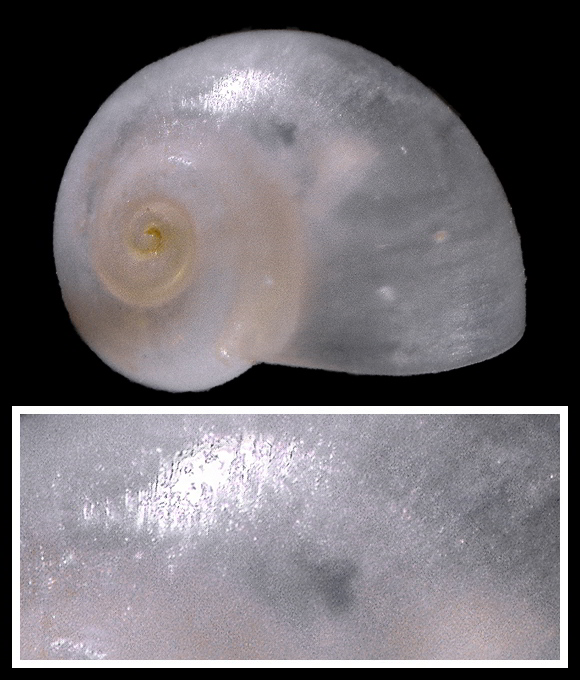
7m deep, in shellgrit from cave, La Azohia, west of Cartagena, Murcia, S. Spain. 1mm. The shell is almost completely smooth, with only some weak traces of radial microsculpture.
